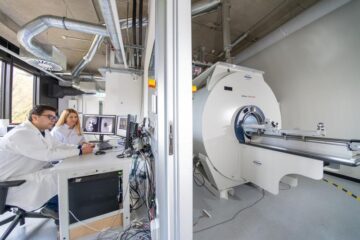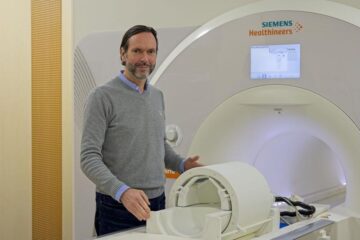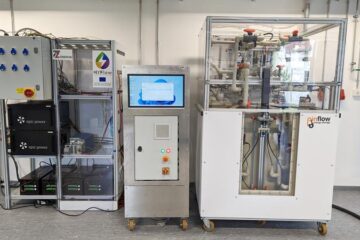Researchers Discover How Alzheimer’s Protein Behaves in Healthy Cells

Lawrence S. B. Goldstein and colleagues at the University of California in San Diego have now discovered how a protein involved in Alzheimer’s disease—the amyloid precursor protein (APP)—normally behaves in the healthy brain cells of both mice and fruit flies. This information, published today in Nature, suggests an all new mechanism by which Alzheimer’s might develop and thus opens new paths to explore towards potential therapies.
The researchers focused on APP because it has long been known to degrade into so-called amyloid beta plaques, which are seen in the brains of Alzheimer’s patients. What had remained mysterious was exactly how and where APP generates amyloid beta—and why that should lead to brain cell death. All cells in the body normally produce amyloid beta, Goldstein says, „that’s why we asked what was special about neurons that made them susceptible to damage caused by APP.“
They found that APP plays an important role in moving signals through axons—the projections along which neurons communicate. In fruit flies, they showed that a lack of APP hindered the neurons’ ability to send materials through axons. Too much APP clogged the axonal system and killed the neurons. These experiments appeared in Neuron last month. In the new report, they demonstrate in a mouse model that the transport system in question moves two enzymes—beta-secretase (Bace) and presenilin—that also seem to be responsible for breaking APP down into amyloid beta.
„Once amyloid beta has been generated, it is possible that the axonal pathway becomes physically blocked,“ Goldstein says. „We’re suggesting that with this blockage, a signal is generated saying that traffic is blocked and the neuron should die. Although this is only a first step in understanding the connection between APP, axonal transport and the location where amyloid beta is produced during disease, our work offers a possible approach for the eventual design of new Alzheimer’s therapies that directly target amyloid beta and APP transport.“
Media Contact
Weitere Informationen:
http://www.sciam.com/news/120601/2.htmlAlle Nachrichten aus der Kategorie: Medizin Gesundheit
Dieser Fachbereich fasst die Vielzahl der medizinischen Fachrichtungen aus dem Bereich der Humanmedizin zusammen.
Unter anderem finden Sie hier Berichte aus den Teilbereichen: Anästhesiologie, Anatomie, Chirurgie, Humangenetik, Hygiene und Umweltmedizin, Innere Medizin, Neurologie, Pharmakologie, Physiologie, Urologie oder Zahnmedizin.
Neueste Beiträge

Diamantstaub leuchtet hell in Magnetresonanztomographie
Mögliche Alternative zum weit verbreiteten Kontrastmittel Gadolinium. Eine unerwartete Entdeckung machte eine Wissenschaftlerin des Max-Planck-Instituts für Intelligente Systeme in Stuttgart: Nanometerkleine Diamantpartikel, die eigentlich für einen ganz anderen Zweck bestimmt…

Neue Spule für 7-Tesla MRT | Kopf und Hals gleichzeitig darstellen
Die Magnetresonanztomographie (MRT) ermöglicht detaillierte Einblicke in den Körper. Vor allem die Ultrahochfeld-Bildgebung mit Magnetfeldstärken von 7 Tesla und höher macht feinste anatomische Strukturen und funktionelle Prozesse sichtbar. Doch alleine…

Hybrid-Energiespeichersystem für moderne Energienetze
Projekt HyFlow: Leistungsfähiges, nachhaltiges und kostengünstiges Hybrid-Energiespeichersystem für moderne Energienetze. In drei Jahren Forschungsarbeit hat das Konsortium des EU-Projekts HyFlow ein extrem leistungsfähiges, nachhaltiges und kostengünstiges Hybrid-Energiespeichersystem entwickelt, das einen…





















